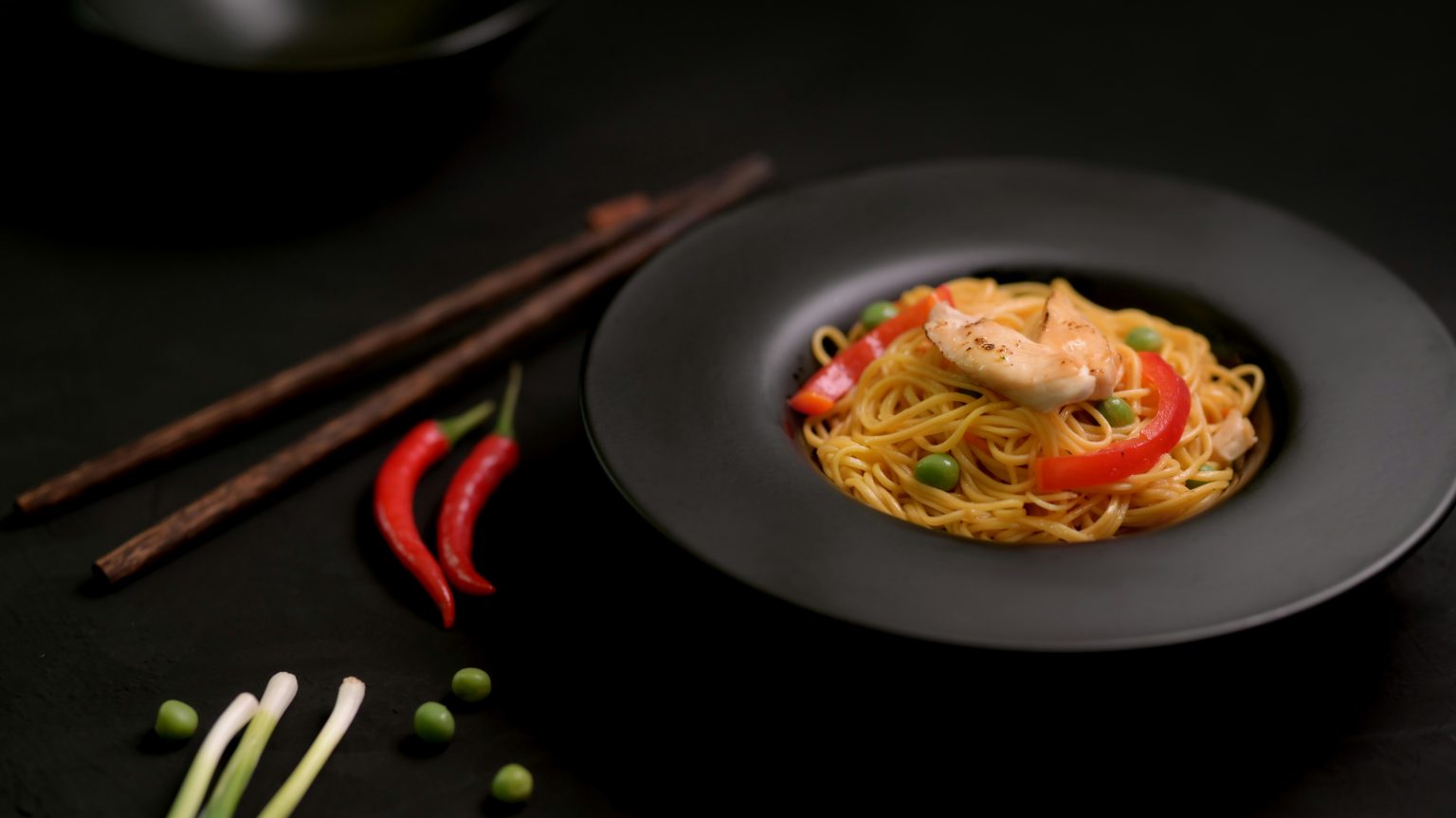Vegetable Chow Mein is a beloved dish, popular for its vibrant mix of textures and flavours. Known for its quick preparation and versatility, this recipe brings the taste of Chinese cuisine to your kitchen. With just a few simple steps, anyone can whip up a delicious, healthy meal that’s both vegetarian and vegan-friendly.
This dish features a variety of fresh vegetables and stir-fried noodles, making it a perfect option for those looking to incorporate more plant-based meals into their diet. The crispy and chewy noodles, combined with a simple yet tasty sauce, create a satisfying main course. Many people customise the recipe to suit their taste by adding their favourite veggies or proteins.
Perfect for busy weeknights, Chow Mein can be made in under 30 minutes, offering a healthier alternative to takeaway. Whether you’re an experienced cook or a beginner in the kitchen, this recipe provides a straightforward way to deliver a nutritious, flavourful meal for families and friends.
Preparation and Cooking Techniques
This section offers clear guidance on selecting the best ingredients for vegetable chow mein, the essential tools needed, how to cook the noodles properly, and effective stir-fry techniques. Each part is designed to help anyone make a delicious dish.
Choosing the Right Ingredients
Choosing fresh ingredients impacts the taste. Use fresh noodles like chow mein or egg noodles for authentic texture, adding an enticing bite. For vegetables, include a mix of colours and textures. Options are bell peppers, snap peas, broccolini, and mushrooms.
Sauces should not be overlooked. Soy sauce, oyster sauce, and sesame oil contribute depth. Select either vegetable oil or sesame oil for cooking, as they complement the flavours well and help achieve the right stir-fry texture.
Essential Cooking Utensils
Cooking chow mein requires some specific tools. A wok is ideal for stir-frying, providing even heat and ample space to toss ingredients. Non-stick pans are alternatives if a wok isn’t available but require more care in heat distribution.
Spatulas or wooden spoons help in stirring ingredients efficiently. A large pot for parboiling noodles is useful when starting with uncooked noodles. Having these tools ensures efficient, even cooking.
Cooking the Noodles
Properly cooking noodles is crucial. If using fresh noodles, they often need a quick rinse under cold water before tossing with a bit of oil to avoid sticking. For other types like lo mein or soba noodles, follow package instructions.
After boiling, cool them quickly under running cold water. This stops cooking and firms up the texture. Add a bit of sesame oil after draining for flavour and to prevent clumping.
Stir-Fry Methodology
Stir-frying is essential in chow mein preparation. Start by heating the wok or pan until very hot. Add a splash of vegetable oil to coat the surface. Stir-fry vegetables like peppers and peas first, as they take time to soften.
Next, add noodles and remaining sauces. Keep stirring or tossing, ensuring all components blend well with the sauce. A proper stir-fry locks in flavours, giving the dish its distinctive savour. The method brings out the best in each ingredient.
Recipe and Nutritional Information
Vegetable Chow Mein is a popular dish that combines tasty noodles with a variety of crisp vegetables. Adjustments can be made for dietary preferences, and understanding the nutritional content is important for health-conscious choices.
Vegetable Chow Mein Classic Recipe
A classic Vegetable Chow Mein recipe showcases a delightful mix of noodles and vegetables. Key ingredients include noodles, garlic, ginger, carrots, mangano, and bell pepper. The noodles are first cooked and cooled under cold water to prevent sticking.
A wok is then heated with oil, and the garlic and ginger are sautéed briefly. Vegetables are added and stir-fried until they are tender-crisp. A mix of soy sauce, sesame oil, and a touch of sugar provides the main flavouring. It’s typically garnished with spring onions or sesame seeds.
Variations for Dietary Preferences
Vegetable Chow Mein is easily adaptable for different dietary needs. For a low-sodium version, reduce or replace soy sauce with low-sodium alternatives.
For those avoiding gluten, gluten-free rice noodles or soba noodles offer a great substitute. Plant-based eaters can enhance the protein content by adding tofu or tempeh. Those with spice preferences may incorporate chilli or Sichuan peppercorns.
Adding a variety of seasonal vegetables can also provide different textures and flavours while maintaining the core chow mein experience.
Nutritional Analysis and Health Benefits
Vegetable Chow Mein offers a balance of nutrients, providing carbohydrates from the noodles and vitamins from the vegetables. A typical serving contains moderate calories, and it’s low in cholesterol.
Rich in dietary fibre, it helps in digestion. The dish includes a mix of B-vitamins and minerals like iron and calcium. Adjustments, like choosing low-sodium soy sauce or increasing vegetable content, can make the dish healthier.
As a vegetable-rich meal, it contributes to daily vegetable intake, promoting a balanced diet. The absence of heavy animal products also usually results in lower saturated fats.



